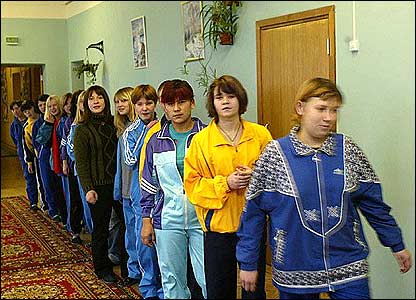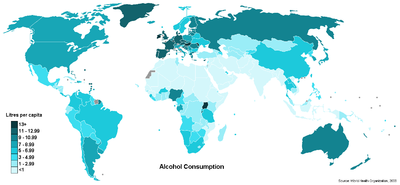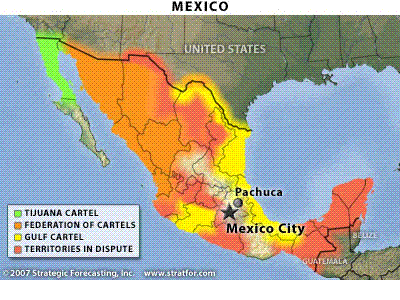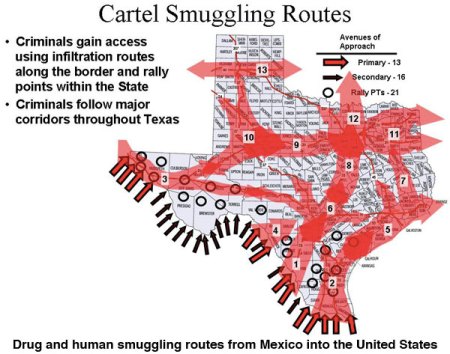Forced Labor
By Juan Chamero, from Caece University at Buenos Aires, Argentine, July 12th 2009
Subject: people, Crime Organized, economy, people rights, security, geopolitics, homeless, immigrants, people displaced, people diseases, invisible people, massacre, people poverty, society, social research
Info Source 1: ILO, International Labor Organization; ILO Forced Labor Statistics; NYT Forced Labor in China, by Howard French; A forced labor Blog;

Workers rescued in May from a brick kiln in Linfen, in Shanxi Province, in northern China, in what has become an unfolding labor abuse scandal, By HOWARD W. FRENCH, Published: June 16, 2007
ILO Forced Labor Report
As per 12th May 2009
“….At least 12.3 million people around the world are trapped in forced labour. The ILO works to combat the practice and the conditions that give rise to it. Forced labour takes different forms, including debt bondage, trafficking and other forms of modern slavery. The victims are the most vulnerable – women and girls forced into prostitution, migrants trapped in debt bondage, and sweatshop or farm workers kept there by clearly illegal tactics and paid little or nothing. The ILO has worked since its inception to tackle forced labour and the conditions that give rise to it and has established a Special Action Programme on Forced Labour to intensify this effort. “
Forced Labor Statistics
Asia
Asia accounts for by far the biggest share of the world’s forced labourers. Many are migrants, either from elsewhere in Asia or their home country. The ILO currently views three issues with particular concern:
• Persistence of bonded labour systems, particularly in South Asia, despite longstanding legislation to ban and punish such practices as well as efforts to identify, release and rehabilitate bonded labourers.
• Widespread trafficking of children and adults, for both sexual and labour exploitation.
• Continued use of forced labour by the State and official institutions, notably in Myanmar.
Research has also shown the existence of forced labour in sectors that had escaped previous attention, including Thailand’s shrimp, fishing and seafood processing industries and shrimp production in Bangladesh.
Some of the highest recruitment payments in the world are found in China, with research showing that workers can pay as much as 2.5 times their expected annual income in recruitment fees to obtain jobs in the U.S.
Americas
Latin America accounts for the second largest number of forced labourers in the world after Asia, according to ILO estimates. Those most at risk are migrant workers in sweatshops, agriculture and domestic service. The main form of forced labour is through debt bondage, involving informal and unlicensed intermediaries who pay advances to entice workers and then reap profits through inflated charges.
Forced labour in Latin America is closely linked to patterns of inequality and discrimination, especially against indigenous peoples. As a result, action to combat forced labour must be part of a broad framework of measures and programs aimed at reducing poverty by fighting discrimination and promoting the rights of indigenous peoples as well as helping poorest workers in urban areas.
In Argentina, there has been a crackdown against garment workshops following evidence that Bolivian men and their families were being trafficked for employment in the sector. Coercive practices include removal of identity documents, locking workers in factories and compelling them to work for up to 17 hours a day. After a factory fire killed several Bolivians in March 2006, a government inspection program led to the closure of more than half of the workshops visited. The drive included the establishment of a telephone hotline “Slave Labour Kills” in April 2006.
Elsewhere in Latin America, abusive practices include compulsory overtime, with allegations that in Guatemala, for example, workers were threatened with dismissal for refusing to work shifts of up to 24 hours.
Info source 2: BBC of London, In Pictures: Forced Labor and Trafficking; David Kilgour Website a director of the Washington-based Council for a Community of Democracies (CCD).
Some not so awesome Forced Labor Images

From Russia: These are orphans. Natasha is the last one in the row, hiding from everybody. She was taken to the foster home by police who found her at a train station. Natasha didn’t know her surname or her age. Her mother is said to have sold her to people who ran a “beggar business”. “If I didn’t bring any money, they would beat me and send me back to work next morning,” she told people at the home. Natasha later disappeared from the orphanage and has not been seen since. Her mother has been located – she denies selling her daughter, saying she “rented her so she could earn some money for textbooks”.

Butterflies made by Falun Gong practitioners detained in Heizuizi Women’s Labor Camp in Changchun City, Jilin Province. The above pictures are some products and children’s jewelry made by Falun Gong practitioners under duress in the Masanjia Forced Labor Camp in Shenyang City, Liaoning Province. In addition to persecuting practitioners using brutal torture, murder, and sexual abuse, the Chinese Communist Party (CCP) also uses forced labor and organ harvesting to make huge profits. Falun Gong practitioners are illegally arrested and sent to prisons, labor camps, and brainwashing centers just for remaining steadfast in their belief in Falun Dafa and the principles of Truthfulness, Compassion and Forbearance. While they are subjected to physical mistreatment, they also have to do hard labor for over 10 hours a day in very poor working conditions to make products. These products are exported to the United States, Japan, Australia, Europe, and have brought in a huge amount of foreign currency for the CCP. The economic exploitation of practitioners is an important part of the persecution of Falun Dafa by the CCP.
Comments: These two pills show us the remaining of an almost chronic social disease: slavery. Take into account that ILO statistics talk of about 13 millions of people suffering the cruelest forms of forced labor. However this is only the visible part of the people exploitation iceberg: people who are enforced to work more than 16 hours a day six days a week and living like animals. People working in Latin American “maquilas” and sweatshops working from 11 hours a day up whole weeks all over the world should be accounted for hundreds of millions.
Tags: ILO, International Labor Organization, forced labor, forced labour, debt bondage, trafficking, modern slavery, slavery, sweatshops, sweatshop, Howard French, forced labor in China, garment workshops, slave labor kills, Myanmar slavery, Thailand shrimp, Bangladesh slavery, migrant workers, indigenous people slavery, Argentina garment shops, Argentina garment factories, bolivian urban slavery, slave labor kills, slave labour kills, compulsory overtime, continuous shifts, Davod Kilgour, beggar business, russian beggar business, Falun Gong, Falun Gong slavery, Masanjia Forced Labor Camp, Masanjia, Shenyang City, organ harvesting, Chinese organ harvesting,



 We suggest to carefully read two items of this authoritative FAQ:
We suggest to carefully read two items of this authoritative FAQ: